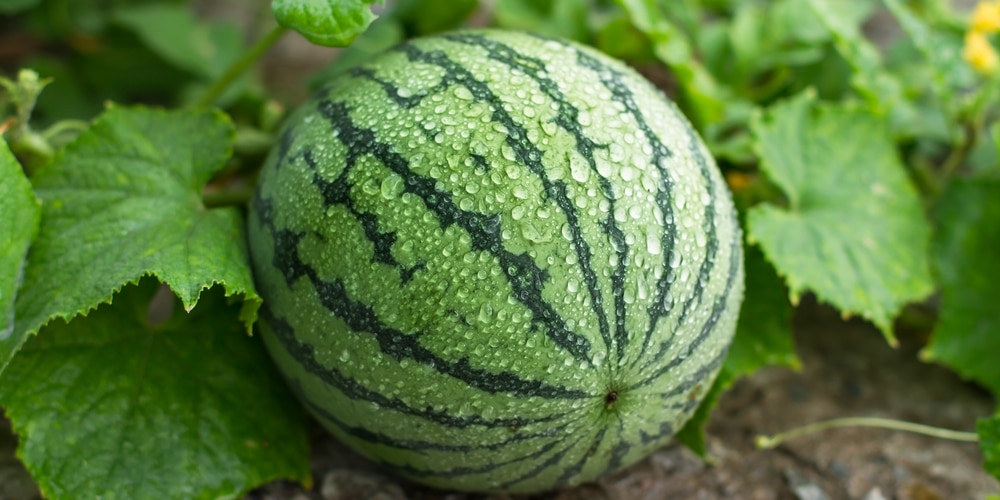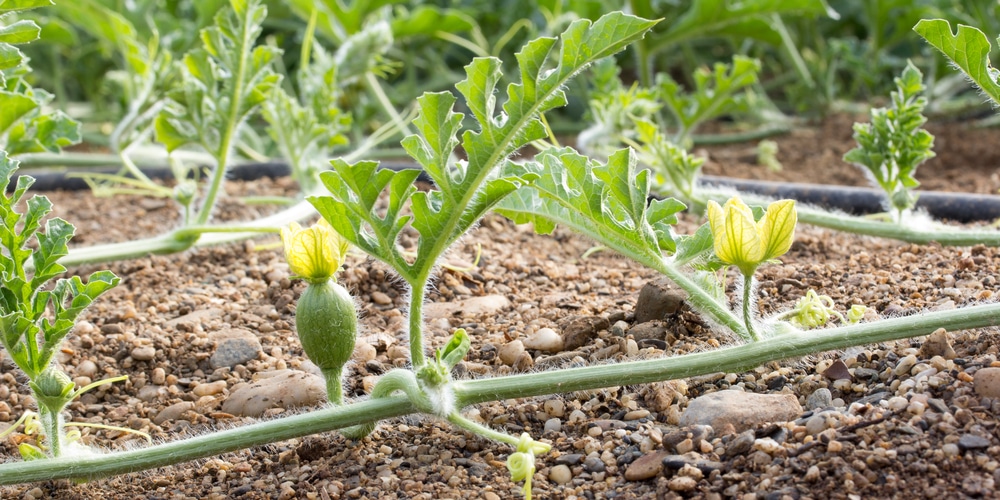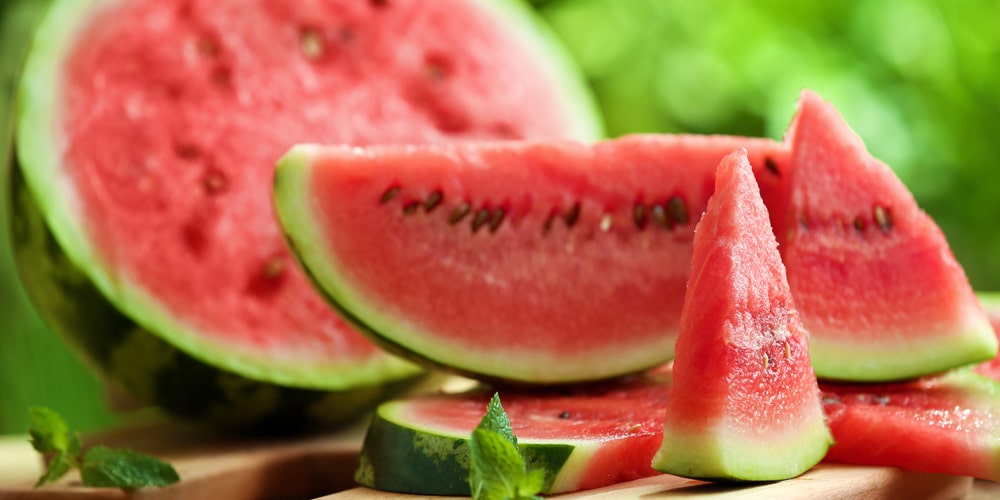If you’re planning to plant watermelons for the first time, you may want to find out about the watermelon growing stages so that you know what to expect. Watermelons go through various stages from germination until the fruit matures and is ready to pick. Let’s look at Watermelon Growing Stages.
Watermelon Growing Stages
Watermelon is a tasty fruit that is loved around the world. It’s sweet and delicious and can also help to hydrate you on a hot day. Watermelons are very healthy and provide you with a good source of Vitamin C and Vitamin A. They are said to have an anti-aging effect on the skin and are also used in the beauty industry.
You may also have seen watermelon carvings and watermelon growing competitions. The average watermelon weighs 15-20 pounds, but the world record is 350 pounds.
Watermelon goes by the botanical name Citrullus vulgaris and annual plants that grow fruit on a vine vining. The plant’s roots and vines will spread as they grow and, depending on the variety, will need up to 18 feet of ground space. You’ll need to ensure you have enough room in your garden if you decide to grow watermelons.
Watermelons grow well throughout the USA and come in many different varieties. There are 50 common types of watermelon in America and approximately 1200 watermelon varieties worldwide. Watermelons grow best in temperatures of between 65- and 85-degrees Fahrenheit.
Stage 1: Planting
The first of the watermelon growing stages is planting.
If you live in the northern states, you can choose an early-maturing watermelon variety with a shorter growing season. You can plant your seeds in the early spring in sandy soil that’s well-drained. In the southern states, you’ll have more choice of seeds and can plant slightly later, as you’ll be able to take advantage of an extended growing season.
Ensure that temperatures have reached at least 65 degrees Fahrenheit before planting your seeds.
If you live in a colder climate, you may like to start your seeds off inside and then plant the young melon seedlings outdoors when the weather gets better. When planting watermelon seeds, you should place them in the ground at a depth of approximately an inch or four times the width of the seed.
You may like to ‘chit’ the seeds before planting them. To do this, place the seeds on a damp piece of kitchen paper and put them in a container, which you can then cover with cling film.
The seed will produce a root in two or three days and can then be planted. You can either plant the seed in a pot on your windowsill to be re-potted when the outside temperature increases or straight into the ground.
Plant seeds approximately six feet apart on small hills, as this will allow the plant’s space they need to spread. Water your seeds well after planting and provide them with plenty of water regularly throughout the growing season.
Stage 2: Germination
The first stage of growth is known as germination. This process begins as soon as you bury the watermelon seeds in the ground. Your seeds will start to germinate when they receive adequate water and the temperature of the soil increases to above 65 degrees Fahrenheit.
The seed will chit in the same way they would have done if you’d started them inside on tissue paper. A small stem, known as a hypocotyl, will grow as well as a root or radicle. It will take between three and twelve days for the young seedling to be pushed through the soil. You’ll notice the first two leaves, known as the embryonic leaves, above the soil’s surface.
Stage 3: Vining Stage
The third watermelon growth stage is vining.
Once the seeds have germinated, and a small stem with two leaves has emerged, the young watermelon will continue to grow larger. Within five to ten days, it will have grown another set of leaves. These are the plant’s true leaves and will be a different shape to the embryonic leaves.
These mature leaves can photosynthesize, which helps the plant use sunlight and carbon dioxide for energy. Within the first two weeks, a vine will start to grow from the plant. This will slowly get larger until it spreads to a foot in length; large leaves will also begin to form on the vine.
The vine will continue to grow and spread along the ground to a length of approximately 12 feet. About a month after the plant has grown its first vine, a few more vine will start to grow. All the vines will grow leaves and will continue to get larger until the flowering stage begins.
You can add 1/2 a cup of bone meal to the top of your soil surrounding the watermelon plant. This can be gently mixed into the ground to feed the plant. Be careful when working with the plant, as you don’t want to damage its shallow roots. You should also be providing your watermelon seedlings with regular water at this stage. Approximately one inch of water can be given twice a week.
Stage 4: Flowering
Once the watermelon plant has finished growing its long vines, it will put its energy into producing flowers. Each plant will have both male and female flowers, with the males growing first. The male flowers provide the pollen to fertilize the female flowers, which have a bulge behind the flower, from which the fruit grows. Your watermelon blossoms will be pollinated by bees and other pollinators.
Stage 5: Fruiting
Once the flowers are pollinated, the watermelon fruit will start to grow. You’ll notice a tiny green bulge behind the female flowers. These will slowly swell and, in time, will produce a watermelon. Once the fruit has started growing, you can provide your plant with a 5-10-10 fruit fertilizer. You can also reduce watering slightly to an inch of water each week until the fruits are ready to harvest.
From the last watermelon growing stage, it will take about a month for the fruit to fully mature and ripen. The melon will be ripe and ready to eat when the vine’s tendrils turn brown, and the melon has a hollow sound when you tap on its skin.
Watermelon Growing Stages: Final thoughts
Growing watermelons is very rewarding, and the fruit tastes amazingly refreshing on a hot summer’s day. Watermelons go through various stages of growth to turn from a tiny seedling into a large vining plant. As a gardener, you’ll be able to observe various watermelon growing stages before the fruit is ready to harvest.
Related: Pumpkin Growth Stages


